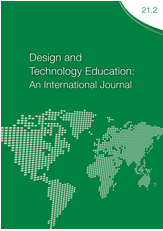Pre-service Teachers’ Conclusive Principles for Teaching Technology Education
Keywords:
initial teacher education, technology education, conclusive principles, personal epistemology, pedagogy, design and technology, D&TAbstract
What enduring knowledge and understanding from tertiary education study will learners remember most that will contribute to their on-going performance and understanding for effective teaching? This paper is based on research undertaken to identify what third-year initial teacher education students in a course including Technology Education curriculum development conclude as important principles for teaching that discipline effectively in their classrooms. Their course-concluding principles should be seen as first steps or thoughts as they transition from university into their first appointments and begin teaching. Literature on personal epistemologies (Brownlee, Schraw & Berthelsen, 2011) identifies that preservice teachers’ awareness will also be reflective of prior experiences they have had in the community and from teachers they have been exposed to and that their naïve epistemologies will give way to more sophisticated beliefs and practices as their confidence and understanding develops. The students’ conclusive principles were analysed to identify the nature of their understanding and as a guide to what teaching in this discipline might look like as they begin their teaching career.
Downloads
Published
How to Cite
Issue
Section
License

This work is licensed under a Creative Commons Attribution 4.0 International License.
This work is licensed under a Creative Commons Attribution 4.0 International License.
Authors who publish with this journal agree to the following terms:
Authors retain copyright and grant the journal right of first publication with the work simultaneously licensed under a Creative Commons Attribution License that allows others to share the work with an acknowledgement of the work's authorship and initial publication in this journal.
Authors are able to enter into separate, additional contractual arrangements for the non-exclusive distribution of the journal's published version of the work (e.g., post it to an institutional repository or publish it in a book), with an acknowledgement of its initial publication in this journal.


